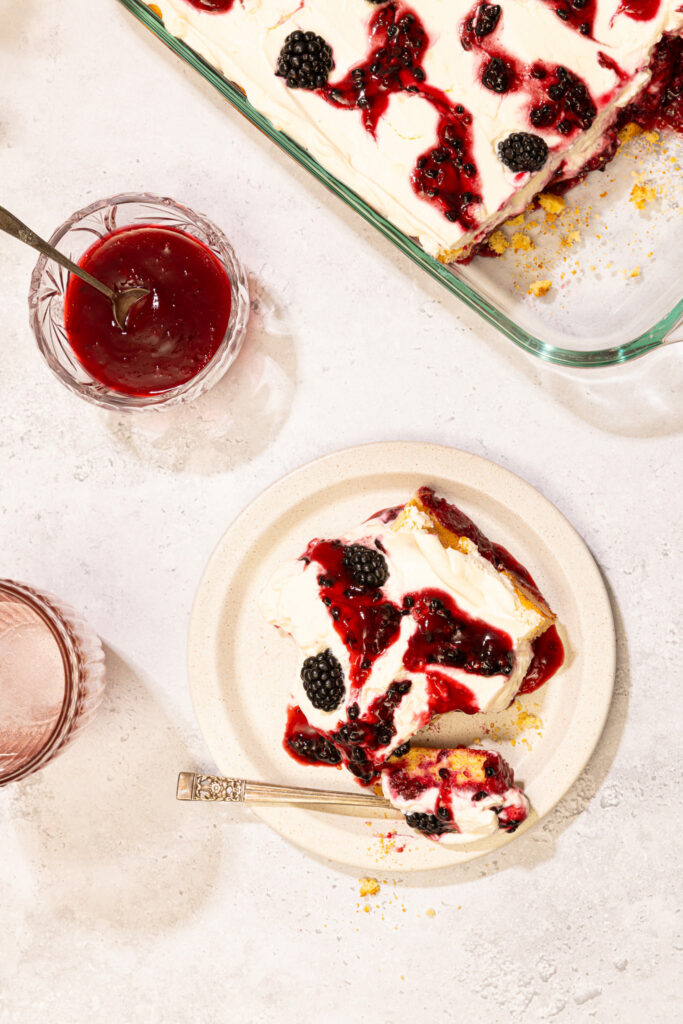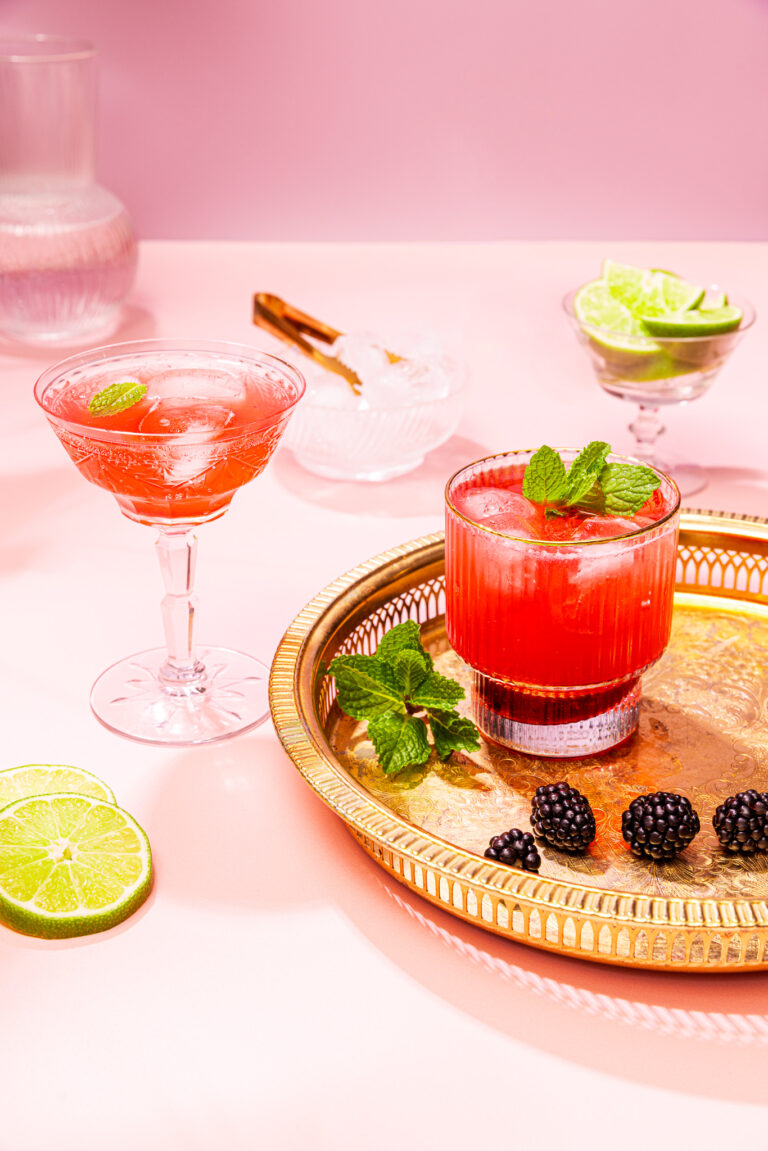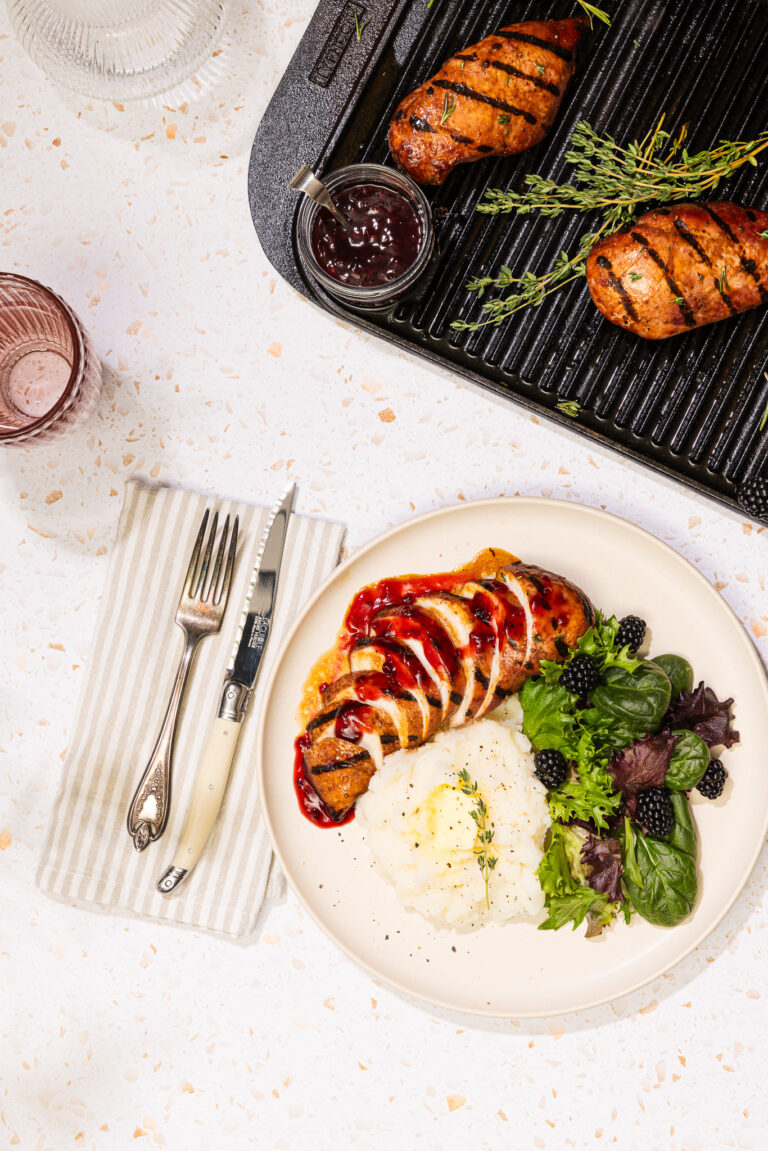Newly arrived from Alberta, I discovered a hidden gold mine behind a gas station in Squamish. “Jackpot!” I yelled to my husband upon finding the tangle of blackberry vines. “Free food!”
We greedily picked the sweet, juicy gems, filling our faces and whatever bags we found in the car. The bushes stretched on and on, with many of the berries just out of reach. In under an hour, I’d scratched my forearms to shreds and stained my shirt, and sweat dripped into my eyes. We made plans to return to our secret patch with ice cream buckets and discussed the plausibility of living on blackberries all summer — and freezing enough so we could feast through the winter as well.
We soon learned that, in this blissful paradise, the gas station patch wasn’t unique. Blackberry bushes run rampant in vacant lots and alleyways, along sunny trails and on roadsides in the Sea to Sky region, bursting with fruit during the summer’s heat. Residents, visitors, birds and bears alike pluck from nature’s buffet — and vitamin shop: Blackberries are high in fibre, low in calories and packed with antioxidants, vitamins and minerals.
The delicious bounty makes it difficult to imagine a B.C. summer without blackberries, but the prickly producer of plenty is actually an invasive species, not native to the area. Many communities now go to great lengths to restrict or eradicate the Himalayan blackberries before their brambles devour fertile spaces at the cost of native species. The Sea to Sky Invasive Species Council lists the Himalayan blackberry as a species to eradicate in Whistler and Pemberton and to strategically control in Squamish. The SSISC works with the Whistler Naturalists and local governments to reduce further invasion by controlling seed spread and removing bushes before they can flourish.
The Himalayan blackberry owes its widespread dominance to horticulturist Luther Burbank, who introduced the plant in the late 1800s. Until then, raspberries, salmonberries and smaller, trailing native blackberries prevailed.
Spreading the invasive species was far from his worst idea: While he developed the spineless cactus, the Shasta daisy and the Russet Burbank potato, Burbank was active in the American eugenics movement, many members of which argued that only certain races be let into the United States, and was a member of the American Breeders’ Association’s Committee on Eugenics.
But don’t hold that against the berries. Despite their checkered past, they’re here to stay, at least around Squamish. Which is why I still don my gloves each summer and head out beyond the gas station, lips purple with juice, snacking on berries as I pick enough to get me through until next year’s crop.
Picking Tips
- Wear long sleeves, long pants and gloves for protection against thorns.
- Don’t pick berries lower than knee-high. That’s the dog-pee zone.
- Only pick shiny, dark berries that come off easily.
- Use a stepladder, large stick or clippers to reach higher branches or draw them down to you.
- Bring a wide bucket to avoid squishing the delicate berries under a large load.
- To freeze your berries, rinse them, pat them dry and spread them on a baking sheet. Pop them in the freezer for a few hours and then transfer them to freezer bags or containers.





